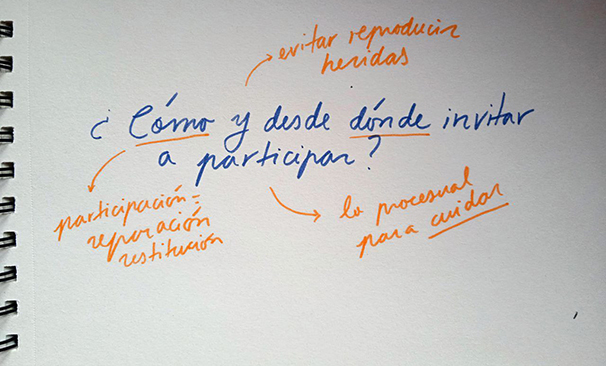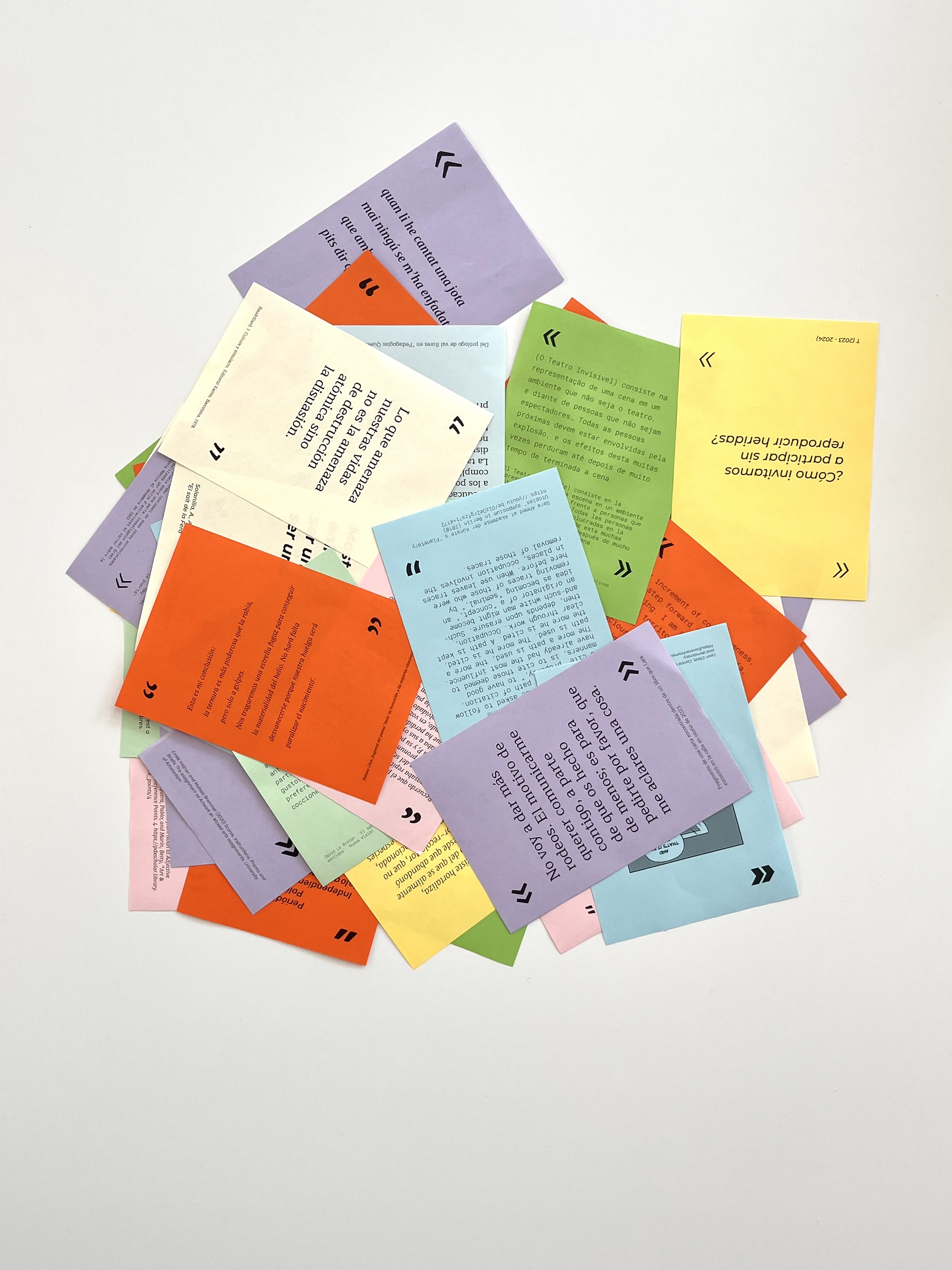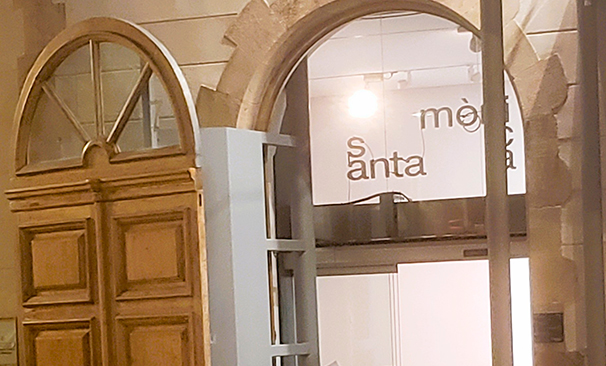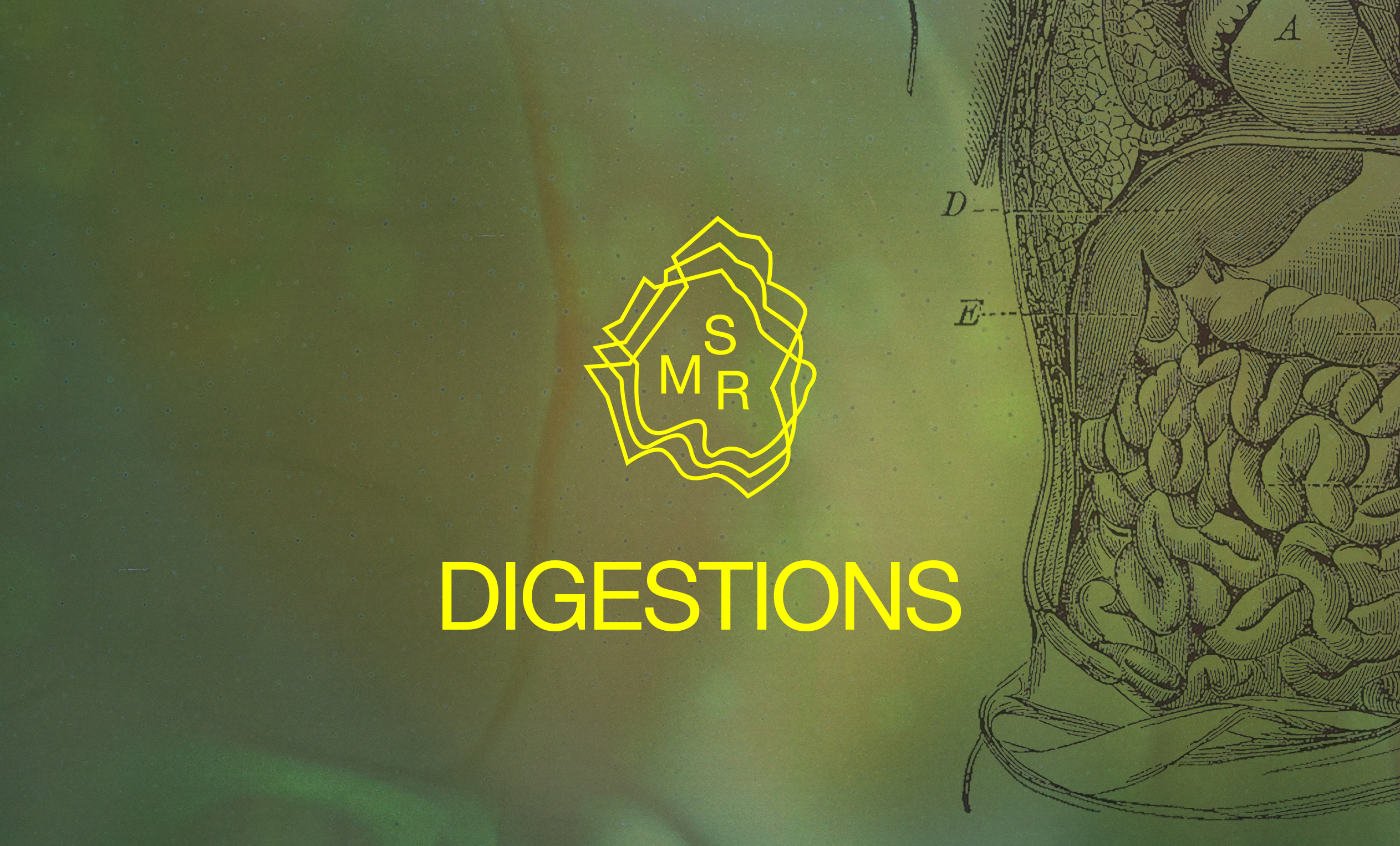What are you looking for?
You might be looking for...
PadPerformance
A tool to ask ourselves about access
Abstract
PadPerformance is a performative online document that seeks to increase accessibility to and facilitate participation in the centre's proposals through digital technology.
The prototype is also accompanied by the brochure mix, a paper guide for art centre users that allows them to evaluate and point out any barriers or access difficulties they encounter. The sheet of paper includes instructions for use and a series of reflections and questions, as well as a large white arrow that serves as a space to write down the barriers identified and proposals for improvement. The idea is that users can hook these arrows through the centre to indicate access difficulties.
In general, the cultural field pays little attention to the people who access its spaces. Existing legislation is ostensibly protective, but often does not provide for the implementation of the universal design it seemingly promotes. Technology, for its part, offers possibilities that can be used to increase accessibility, but these services are often considered exceptional and costly. However, there are changes that do not depend on the intervention of large infrastructure or technological deployments, but rather on planning and designing activities with more than the standardised possibilities in mind.
For this reason, PadPerformance was created with the intention of providing tools for creators, artists and curators to reflect on their practice in relation to ableism and to participate in a change of perspective so that more and more people can intervene in cultural proposals.
BACKGROUND
- A computer or smartphone to be able to participate in the online document and prepare the printable materials.
- Printer and paper to provide information leaflets and brochure mix deliverables.
INGREDIENTS
1. Make a list of all the access difficulties that may be encountered in the environment when participating in an artistic or cultural action. Consider all perspectives: as users, but also as artists, creators, curators and cultural workers.
2. Check that the breakdown of difficulties includes all the necessary collectives and leave no one behind.
3. Contact artists who specialise in this field and explain your objectives and motivations. Facilitate a co-working space (in our case, it was digital).
4. Once the creative proposal has been designed, design an explanatory leaflet and the necessary materials for physical participation, if appropriate. In this case, it was decided to also provide paper arrows to reflect on and point out the centre's access difficulties.
5. Prepare the pad where the digital performance will take place and provide the link.
STEPS
In our case, working together in a digital space was an advantage: this facilitated processes and allowed us to better connect with digital creation and participation. It also allowed us to experiment with a different type of relationship with the participants, including the possibility of a more sustained follow-up over time and a record of how the proposal was being constructed.
If you would like to reproduce this prototype, we encourage translations of all materials into different languages.
RECOMMENDATIONS AND ADVICE
Materialisations
Participation Guild Prototype 23-24
Tatiana Adelaida, Antoni Conesa and Violeta Ospina Domínguez
Participants:
Ren Loren Britton, Iz Paehr and T.
Acknowledgements:
Melt, for his generosity, care and openness; and Jara, who brought us together and thus made this proposal possible.
PROTOTYPE CREDITS 23-24
* This recipe is based on documentation of the entire process. For more details, contact us at santamonica@gencat.cat.



